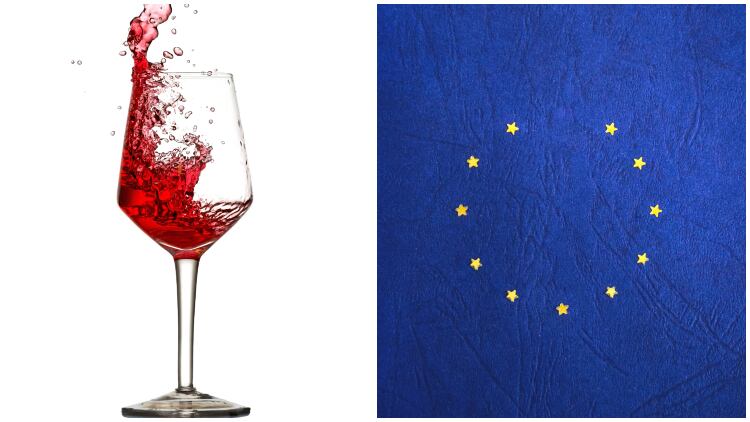Brexit is shaping up to be a potential headache for many brands and industries. But if you ignore the temptation to adopt a glass-half-empty approach, it’s just possible that Brexit could provide an unexpected boost for, of all things, British wine.
Could Brexit finally mark the full coming of age of British vino?
It’s an intriguing question. After all, British wine heritage goes back hundreds of years owing largely to warmer climates, and the introduction of vine cultivation by the Romans. And more recently – during the Crusades – Brits as far north as York were producing wine.
Still not convinced?
Well, what is today known as ‘Champagne’, its regional namesake was in fact created in the picturesque Cotswold town of Winchcombe in 1697 – a full 30 years before a certain French monk Dom Pérignon is said to have supped the first French fizz. We owe this international one-upmanship to British scientist and naturalist, Christopher Merrett, who first documented putting the fizz into the drink. Eat your hearts out, France.
Needless to say, history is all well and good. But today, Britain’s association with the bubbly stuff falls a long way short of our Gallic friends. After British vineyards were all but eradicated during the period of the the Second World War, it was only in the 1960s that they began to adorn our countryside once again. We have some catching up to do.
This doesn’t mean that our winemakers aren’t both making a comeback and punching above their own weight. Each year we’re seeing more and more British wines winning global awards, with Ridgeview – the UK’s largest winemaker – receiving in November 2018 the coveted trophy of Winemaker of the Year in the prestigious International Wine & Spirit Competition. They could, however, still punch much higher.
Part of the problem is, of course, us Brits don’t have a name for our product. Our uninspiring ‘sparkling wine’ is not as sexy as our European cousins’ alternatives such as Prosecco (Italian), cava (Spanish) or sekt (German). There is no ‘branded category’ wave for British vintners to surf. Perhaps ‘Merrett’ would be a candidate for British sparkling wine. Until then, we merely produce wine with bubbles.
But this problem isn’t insurmountable. No matter what the outcome of Brexit, the consensus is that this historical occasion will impact consumer spending and imports and exports. This will make foreign imports more expensive, but it won’t abate Brits’ love for wine – we’re globally the sixth largest market, second largest trader by volume – so wine enthusiasts within our isles look for other options.
The domestic market will grow as foreign wine becomes more expensive than homegrown sources. With British vintners bubbling up as widely as Llanerch in Wales to Wyken in Suffolk, competition is rife, so British vintner brands will need to work hard on brand and pack design to help differentiate.
But it could also grow internationally. Yes, thorny functional issues like tax concerns may need to be addressed to be globally competitive. But we’ll also need branding that caters for differing visual and taste persuasions. This principle is no different domestically as internationally. And it nods to a fundamental problem: persuading people to change brands.
British winemakers are at a disadvantage to their global competitors. Vintners in France or Chile have cultivated brands for decades, even centuries, and consumers find it hard to wean themselves off a lifetime of habit. But where there’s challenge, there’s opportunity if we deploy the right strategies. So while we might not be able to teach an old dog new tricks, one can certainly change the way it does them.
Key to driving brand equity is to understand how we arrive at purchase decisions, which are determined by different pathways in our brain known as System 1 and System 2 thinking: the difference between the automatic nature of driving a car (System 1) and the act of learning to drive (System 2). But once learned, the thought becomes encoded, and develops into a reflex.
When we do something over and over again, like purchasing one brand, it creates pathways in the brain – shortcuts. As designers, we have to be responsible for, and latch onto, such shortcuts to create ‘shelf-shout’. And changing such lifetime habits is the fulcrum of design and brand today. It’s about creating design that feels familiar and fresh, despite being new. This can be as simple as a new font or colour, right through to a cleverly crafted bottle label that draws inspiration from the local topography.
Beyond this, Britain can also draw upon its unrivalled, but untapped heritage – a core branding concept – to project its credentials both domestically and internationally, and to inform its pack design. But this cannot be chest-beating patriotism. No matter what one’s view on Brexit, it has informed us of the need to be international in focus and in ambition, and this must be reflected in elegant design and branding.
And it’s on this final point where we see the opportunity of Brexit for winemakers. Yes, tough times may be ahead. But with its rich heritage and artisanal wine production, Britain is well placed to do stand on its own two feet. But the industry needs first to create shelf-shout both domestically in store, and metaphorically on the international shelf. Let’s drink to that.

